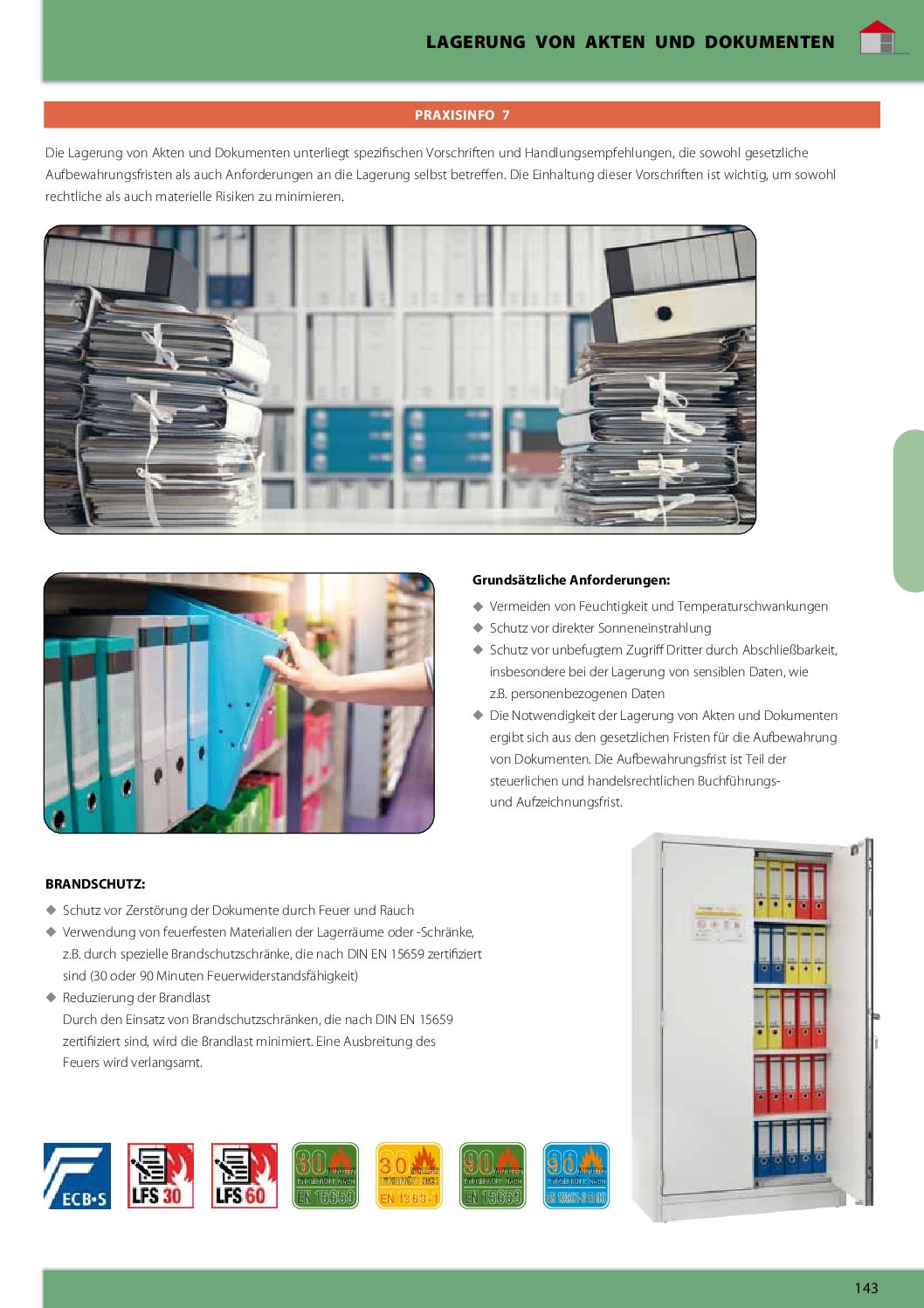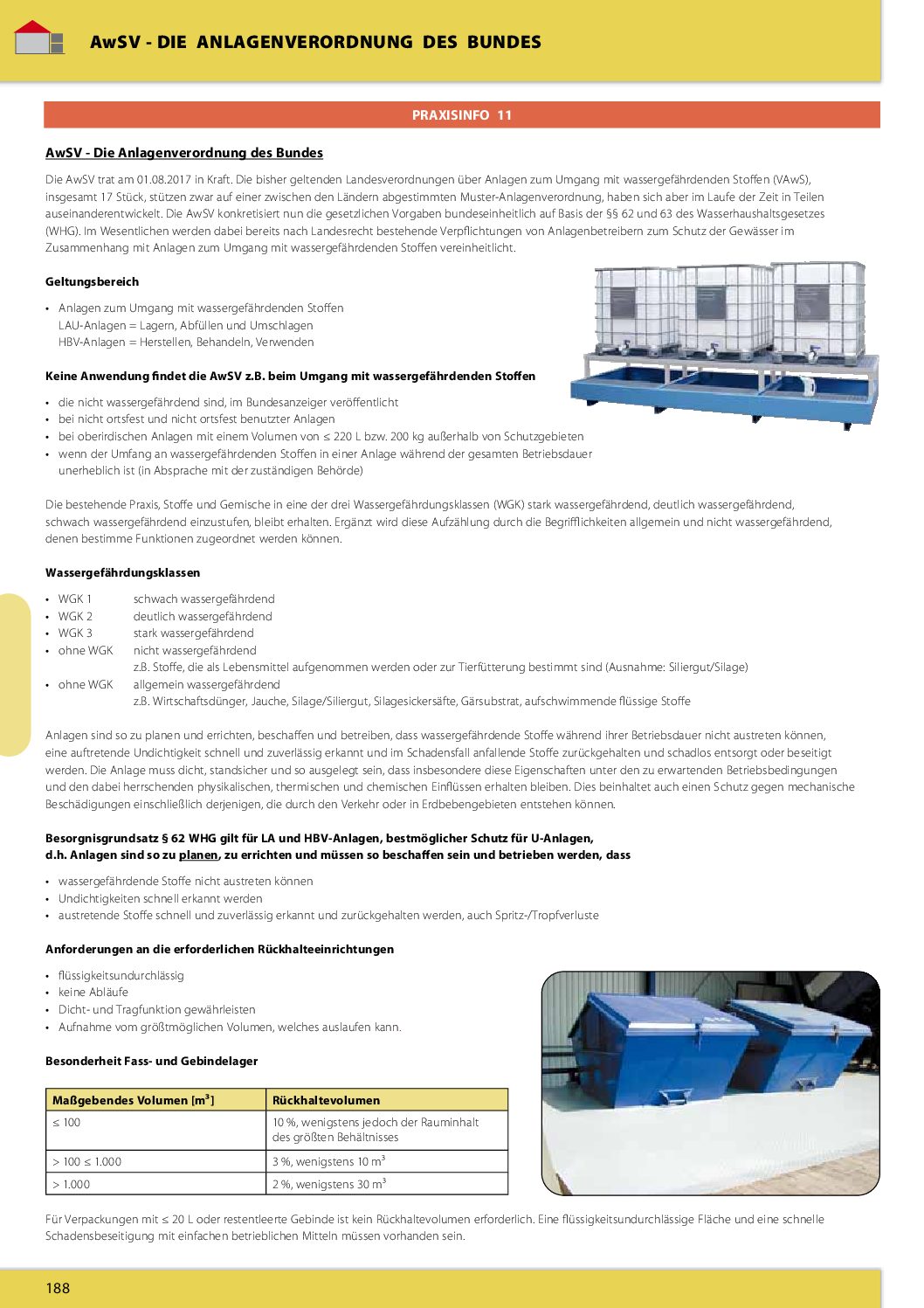Practice information
Laws, regulations and information on the storage of hazardous substances
1. important laws and regulations
|
ADR
|
Regulations for the transport of dangerous goods |
|
ASR
|
Workplace Directive |
| AwSV | Ordinance on Installations for Handling Substances Hazardous to Water |
| BetrSichV | Industrial Safety Ordinance |
| BImSchG | Federal Immission Control Act |
| BImSchV | Federal Immission Control Ordinance (e.g. 4th BImSchV, 12th BImSchV) |
| ChemG | Chemicals Act |
| CLP | Regulation on the classification, labelling and packaging of substances and mixtures |
| DGUV | German Social Accident Insurance |
| GefStoffV | Hazardous Substances Ordinance |
| LBauO | Building regulations of the federal states |
| LöRüRL | Extinguishing water retention guideline |
| REACH | Regulation on the Registration, Evaluation, Authorisation and Restriction of Chemicals |
| StawaR | Steel trough guideline |
| TRBS | Technical rules for operational safety |
| TRGS | Technical regulations for hazardous substances (e.g. TRGS 509, 510) |
| TRwS | Technical rules for substances hazardous to water |
| WHG | Water Resources Act |
2. specialised company according to § 62 AwSV
Systems for storing substances hazardous to water may only be erected, installed and set up by specialised companies in accordance with AwSV. A manufacturer qualification in accordance with DIN EN 1090-2 execution class EXC2 is required for production.
3. water-polluting liquids
|
Designation
|
Water hazard classes
|
| Highly hazardous to water | WGK 3 |
| hazardous to water | WGK 2 |
| slightly hazardous to water | WGK 1 |
4. collection volume
The collecting device (drip tray) must collect 10% of the total quantity stored above it, but at least the contents of the largest individual container.
In water protection areas, 100% of the storage quantity must be collected if storage is permitted.
5. authorisations
Manufacturer's declaration of conformity (ÜHP) for collection systems with a collection volume of up to 1000 litres in accordance with the DIBt Steel Sump Guideline (StawaR). In addition, the DIBt issues general building authority approvals (abZ), general type approvals (aBG) or European Technical Assessments (ETA) for products that do not comply with the StawaR and for collection systems made of plastic, regardless of the collection volume.
6 CLP and GHS
Regulation (EC) No. 1272/2008 introduced a standardised European labelling system based on the Globally Harmonised System (GHS). The CLP / GHS has been mandatory for all substances since 1 June 2015.
7. REACH
Regulation (EC) No. 1907/2006 of 18 December 2006 is directly related to CLP and serves, among other things, to register and evaluate chemical substances. REACH collects data for health and safety risks of chemical substances as a basis for e.g. safety data sheets (SDS), risk assessments (RSA).


















